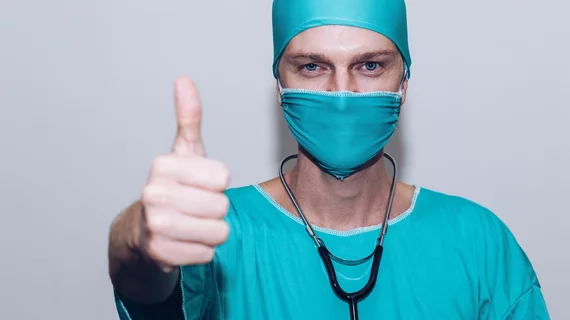Colonoscopy AI passed meaningful milestones but has miles to go before it sweeps
Before colonoscopy AI can progress from lab to clinic on a broad scale—and win regulatory approvals along the way—it has to show its diagnostic mettle in numerous large clinical trials conducted at multiple facilities.
That’s the conclusion of two academic gastroenterologists who reviewed the literature and have issued a report in Therapeutic Advances in Gastrointestinal Endoscopy.
Plenty of recent research has established the promise of AI for saving lives from colorectal cancers: The technology has been shown to help endoscopy operators both detect and characterize colorectal polyps.
However, the authors point out, most of the algorithms demonstrated so far have been trained on image datasets small enough to invite suspicions of skewed outputs due to selection bias and nonrandomization.
Lead author Nasim Parsa, MD, of the University of Missouri and Michael Byrne, MD, of the University of British Columbia analyze AI colonoscopy studies in two primary categories—polyp detection and polyp characterization.
For the former, AI for detection of colorectal polyps (AI CADe), the authors searched out randomized controlled trials comparing AI CADe with conventional colonoscopy. They found eight that met their criteria, and all of these found AI CADe catching significantly more adenomas (polyps with the potential to become cancerous).
In one of the studies, the “better” adenoma detection rate reflected the AI’s detection of very small adenomas.
However, AI CADe was no sharper than the operator’s eye at detecting polyps of more than 10 mm. In addition, AI CADe flagged more low-risk hyperplastic polyps and did not better at flagging advanced adenomas or sessile serrated lesions (flat polyps with elevated risk of becoming cancerous).
When it came to using AI to help characterize colorectal polyps (CADx), the results were more uniformly favorable toward the emerging technology.
For example, one study saw the addition of CADx as a support tool yield significant improvement in trainee physicians’ diagnostic accuracy.
A separate study found augmenting physician expertise with CADx lifted endoscopists’ diagnostic accuracy from 83% to 89%.
“The greatest improvement was noted in novice endoscopists (73.8% to 85.6%), almost reaching the accuracy of experts (89.0%),” Parsa and Byrne report.
These and other demonstrations of AI-aided colonoscopy represent “promising steps toward standardization and improvement of colonoscopy quality, and implementation of ‘resect-and-discard’ and ‘diagnose-and-leave’ strategies,” they comment. “Yet issues such as real-world applications and regulatory approval need to be addressed before artificial intelligence models can be successfully implemented in clinical practice.”
The study is posted in full for free.
Previous recent coverage of colonoscopy AI:
AI impressive as a second set of eyes in colonoscopy

